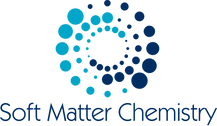
Current Teaching
KRA113 - Chemistry 1A (Semester 1, University of Tasmania)
Together with Chemistry 1B, this unit is a required prerequisite for those students intending to major in Chemistry and for those intending to proceed to 2nd year chemistry. It provides students with fundamental knowledge and concepts in inorganic, physical, analytical, and organic chemistry, with applications in both the physical and biological sciences. Topics include bonding and structure, thermodynamics and the chemistry of organic functional groups. Laboratory sessions are designed to increase students' manipulative skills and, where possible, to reinforce the lecture program.
KRA170 - Chemistry of Materials (Semester 1, University of Tasmania)
Develops a basic knowledge of chemistry and chemical principles necessary for the understanding of the physical and chemical properties of materials. Topics include an introduction to chemical theory, bonding and intermolecular forces, water chemistry, metals, alloys, silicates, glasses, cements, equilibria, thermochemistry, electrochemistry, petroleum, chemical explosives and polymer chemistry.
KRA243 - Physical and Analytical Chemistry (Semester 2, University of Tasmania)
This unit builds on KRA113/114 or KRA101/102, and consolidates the theoretical and practical framework required by students who intend to major in chemistry or who need additional chemistry to support their studies in other science areas. The Physical Chemistry component focuses on chemical kinetics and surface chemistry. Chemical kinetics is covered in depth through the consideration of experimental methods to determine reaction rates, numerical methods in chemical kinetics such as the steady-state approximation, and Arrhenius and non-Arrhenius reactions, as well as the reversibility of chemical processes. The physical chemistry of surfaces and interfaces is introduced through topics such as surface tension, self-assembly and adsorption. The Analytical Chemistry component focuses on modern techniques as applied to the analysis and quantitation of a range of samples. Both wet chemical and instrumental methods of analysis such as titration, gravimetry, electrochemistry, atomic spectroscopy and chromatography are covered. The laboratory program reinforces concepts introduced in lectures, provides practical experience in the analytical methods discussed, and gives students experience in good laboratory practice.
KRA341 - Organic and Bioorganic Chemistry (Semester 1, University of Tasmania)
This unit extends the basic understanding of organic chemistry and chemical reactivity from level 200 units and introduces more advanced chemical reactions and the concept of rational synthetic design. The course also highlights the key reactions in the synthesis of biological molecules and provides and introduction to the role of natural products and synthetic chemistry to the pharmaceutical sector.
Topics that will be included are selected from: the biosynthesis of biologically important molecules, natural products and medicinal chemistry, the chemistry of reactive intermediates, pericyclic reactions, heterocyclic chemistry, mechanisms of polymer formation and the use of retrosynthetic analysis in the design of multi-step chemical syntheses.
The laboratory program is closely associated with the lecture material and introduces techniques and instrumentation that are used in modern synthetic chemistry for the synthesis of small organic molecules such as those of importance to the pharmaceutical industry.
KRA343 - Structure and Materials (Semester 1, University of Tasmania) - Unit Coordinator
This unit builds on a range of chemical concepts and techniques introduced in 200 level units that are widely used by modern scientists that are not restricted to the chemical sciences; including earth sciences, environmental studies, industrial chemistry, and physical, health and life sciences. It also introduces topics in materials chemistry as they apply to the development of a range of advanced components used in everyday and technological products.
The material presented concentrates on giving a sound foundation to the theory and application of modern characterisation techniques with an emphasis on the elucidation of chemical structure, with major topics including advanced emission and molecular spectroscopic techniques such as NMR spectroscopic applications (including variable temperature, solid state and 2D experiments), EPR, IR, Raman, photoelectron, UV-Vis spectroscopy, the stereochemistry of inorganic and organic compounds and various aspects of the physical chemistry of surfaces.
In addition, both laboratory-source and synchrotron-based X-ray techniques are introduced, including diffraction and XAS methods. The laboratory program reinforces concepts introduced in lectures and gives students experience in good laboratory practice and hands-on usage of modern research level spectroscopic, physical chemistry and diffraction instrumentation.
Previous University Teaching
I have been a University Lecturer since 2010, and a University demonstrator since 2003. My previous teaching and demonstrating responsibilities have included:
-
KRA225 - Chemistry 2B Inorganic and Physical, University of Tasmania (2015-17, including as course coordinator; unit discontinued end 2017)
-
CEIC6004 - Advanced Polymers - University of New South Wales (2012-2014)
-
CEIC2004 - Industrial Chemistry for Chemical Engineers - University of New South Wales (2012-2014; course co-ordinator 2013-2014)
-
CEIC1001 - Engineering Chemistry (Summer) - University of New South Wales (2012-2013)
-
MOBT5102 - Applied Molecular Biotechnology B - The University of Sydney (2010-2011; course co-ordinator 2011)
-
CHEM2901/2902/2001/2002 - Chemistry 2A/B (Advanced) - The University of Sydney (2004 - 2007; physical chemistry laboratory demonstrator)
-
CHEM2404/2402/2912 - Environmental Chemistry - The University of Sydney (2004 - 2007; laboratory demonstrator)
-
CHEM1901 - Chemistry 1A Advanced - The University of Sydney (2003; laboratory demonstrator)